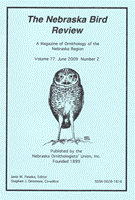Nebraska Ornithologists' Union

Nebraska Bird Review
Date of this Version
6-1988
Document Type
Article
Citation
"Book Reviews," from Nebraska Bird Review (June 1988) 56(2).
Abstract
Bird Navigation: The Solution of a Mystery?, R. Robin Baker, 1984, Holmes & Meier Publishers, Inc., New York. vi + 256 pp., ISBN 0-340-33416-9, softcover, no price given. Originally published by Hodder & Stoughton Ltd. in Great Britain but handled in the United States by Holmes & Meier Publishers, Inc., Import Division, IUB Building, 30 Irving Place, New York, NY 10003.
R. Robin Baker, Reader in Zoology at the University of Manchester, is a noted authority on avian navigation. The word "solution" in the title of this book is somewhat misleading because this book does not solve the mystery of how birds navigate. However, this book is the most thorough, up-to-date review of the various theories on how birds navigate, and integrates these theories to give the reader an idea of how birds might really navigate. The author does an excellent job of presenting all the different ideas in an easily understood and easy to read style. Discussions of each theory include some of the history behind the research, how each theory fits with other theories, how each theory might work on short and long distance movements, and what research needs to be conducted in the future to help clarify how birds navigate. The book explains how birds might navigate under one set of conditions and switch to another navigation technique when conditions change. A fascinating topic presented in a very readable manner.
The Last of the Curlews, Fred Bodsworth, illustrated by T. M. Shortt, x + 144 pp., 6 x 9, Dodd Mead & Co., N.Y. $17.95 hard cover, $8.95 soft cover.
This is a reprint, with a foreword by Dr. Harold D. Mahan, and as part of the Edwin Way Teale Library of Nature Classics, of a book originally published in 1955. At that time it was thought (fortunately, incorrectly) that the Eskimo Curlew was extinct, and this is the story of a year in the life of the last bird. Ascribing human-type thoughts and reactions to the bird helps to carry the story along and doesn't seem to be overdone. It is interesting reading and the illustrations are very nice, and, presently at least, one can keep in the back of his mind that the Eskimo Curlews are still in existence. The author is careful to distinguish between Hudsonian Curlews and Whimbrels , but A. O. U. combined them after the book was written.


Comments
Copyright 1988, Nebraska Ornithologists' Union. Used by permission.